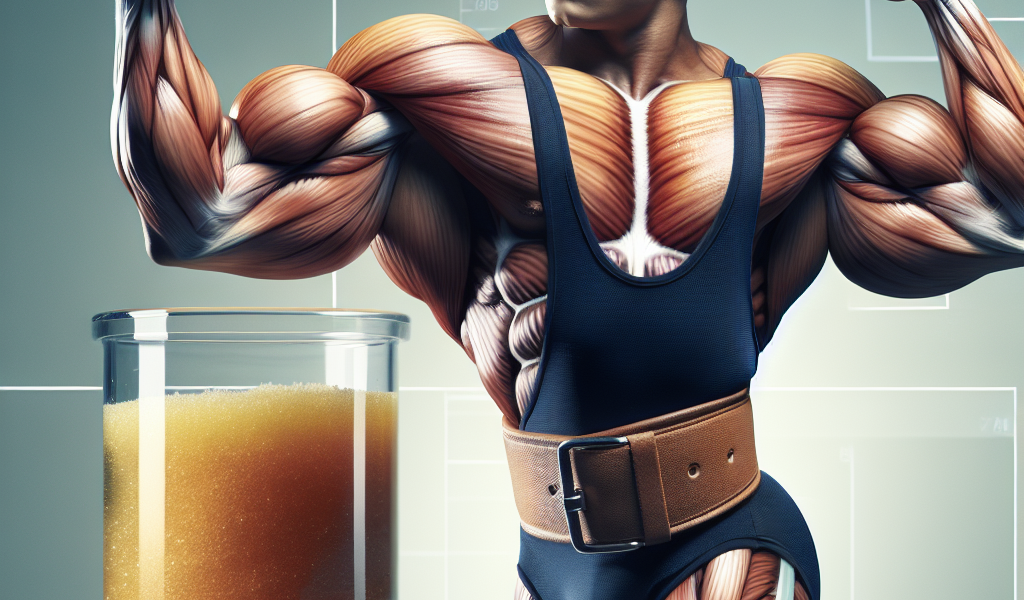How Much Fat Do Powerlifters Hold? What Does a Pound of Fat Look Like?
Interpreting the complex nature of body fat, this insightful article seeks to provide an understanding of how much fat powerlifters typically hold, and explore the physical appearance of a pound of fat. Utilizing cases such as Sophie, who boasts a total body fat of 30% that is in the healthy range, the discourse further scrutinizes aspects of fat-soluble vitamins, body fat storage and the visual proportions of varying fat amounts – from one pound to a hundred. Moreover, it engages with the societal and cultural facets of body fat, including how it is perceived and discussed, offering a holistic exploration of this multifaceted topic.

Understanding Body Fat Composition
Definition of body fat
Body fat serves essential roles not limited to functioning as an energy store, maintaining body temperature, and protecting organs. It is primarily composed of lipids, a group of naturally occurring molecules including fats, waxes, sterols, fat-soluble vitamins, monoglycerides, diglycerides, triglycerides, phospholipids, and others.
Essential body fat vs storage body fat
Body fat can be classified into two types: essential fat and storage fat. Essential body fat is necessary to maintain life and reproductive functions. The percentage of essential body fat for women is greater than that for men, due to the demands of childbearing and other hormonal functions. On the other hand, storage fat consists of fat accumulation in adipose tissue, which can be divided into two categories: subcutaneous fat (located under the skin) and visceral fat (located around the organs).
Determining healthy body fat ranges
Body fat percentages vary among different individuals, and factors such as age, sex, and lifestyle need to be considered when determining healthy body fat ranges. Women tend to have more body fat than men. Generally, for men, a body fat percentage of 6-24% is considered healthy, while for women it is 16-30%.
The Relationship Between Powerlifting and Body Fat
Why some powerlifters appear ‘fat’
Powerlifters often have a physique that deviates from the stereotypical lean and muscular look associated with many other sports. This is because powerlifting is a strength sport, where the main objective is to lift as much weight as possible during competitions; hence, body composition and appearance are secondary to performance.
The role of body fat in powerlifting
Body fat plays a significant role in powerlifting. It provides energy and also acts as a cushion that helps protect joints and tissues during powerlifting exercises. Higher levels of body fat can also contribute to increased power and strength, although this is subjective and can vary among different individuals.
Myths and misconceptions about powerlifters being fat
The assumption that all powerlifters are fat is a common misconception. While some powerlifters may carry more body fat due to the nature of their training and nutrition, this is not always the case. There are also powerlifters with low levels of body fat who perform exceptionally well in the sport.
Case Study: Powerlifters’ Body Fat Percentage
Body fat percentage of professional powerlifters
The body fat percentages among professional powerlifters vary widely, due to differing individual body types and training strategies. However, a significant number of powerlifters maintain a body fat percentage within a healthy range.
Sophie’s body fat
As a case study, consider Sophie, a professional powerlifter, whose body fat is at 30%. This places her within the healthy range of body fat percentages for women.
How common is a 30% body fat percentage in powerlifters?
A body fat percentage of 30% is commonly observed among female powerlifters. As powerlifting demands considerable strength, having an adequate amount of body fat is essential, making a 30% body fat percentage typical among powerlifters.
Visualizing the Quantity of Body Fat
Understanding what a pound of body fat looks like
To provide a more tangible understanding of body fat, consider the visual representation of a pound of body fat. One pound of body fat is roughly comparable in size to a small grapefruit.
Visual comparison: 1lb vs 5lb vs 20lb vs 30lb vs 40lb vs 100lb of fat
The contrast in size grows more apparent when comparing varying amounts of body fat. For illustration, five pounds of fat is roughly the size of a small bike helmet, and 20 pounds is about the size of a car tire. These visual representations offer a powerful reminder of the space body fat occupies in the body.
Fat-Soluble Vitamins and Powerlifting
Importance of fat-soluble vitamins in powerlifting
Fat-soluble vitamins play a critical part in the health of powerlifters. Vitamins A, D, E, and K are fat-soluble and help regulate bone health, immune function, and blood clotting—vital processes for powerlifters.
Understanding fat-soluble vitamins
Fat-soluble vitamins, unlike water-soluble vitamins, are stored in the body’s fat tissues and the liver. They are absorbed in the body along with fats in the diet and tend to stay in the body longer than water-soluble vitamins.
Which vitamins are not fat-soluble?
The vitamins that are not fat-soluble are the B-vitamin complex and vitamin C. These are water-soluble vitamins and as such, are not stored in the body’s fat tissues, but rather, are excreted in the urine.
Consequences of Low Body Fat
Health risks associated with too little body fat
Having too little body fat can have severe health consequences, including a higher risk of malnutrition, weakened immune function, fertility issues, and an increased risk of osteoporosis.
Why low body fat isn’t always better for powerlifters
For powerlifters, low body fat is not always beneficial. Body fat provides energy and protects joints during high impact lifts. It also buffers the body against injuries, which are common in powerlifting.
The effects of low body fat on performance in powerlifting
Significantly low body fat may compromise performance in powerlifting. Powerlifters require adequate levels of body fat to provide sustained energy during training and competition.
The Role of Fat in the Human Body
The function of fat in the human body
Fat in the human body has several functions. It serves as an energy-storage substance, protection for organs against trauma, and insulation against cold environments. Fat also aids in the absorption of vitamins and is involved in the production of certain hormones in the body.
What misconceptions exist about body fat?
Body fat often has a negative connotation due to societal ideals of beauty. However, it is important to remember that body fat plays a significant role in the overall health of the human body. Misconceptions often arise from a lack of understanding about the role of fat in the body.
Comparing fat, carbohydrates, and protein
Fat, carbohydrates, and protein are all macronutrients essential for the human body. Fat is the most energy-dense nutrient, providing 9 calories per gram, while carbohydrates and protein both provide 4 calories per gram. Each of these macronutrients plays a unique role in body function and energy production.
Strategies for Adjusting Body Fat For Powerlifting
How powerlifters can safely adjust body fat levels
For powerlifters looking to adjust body fat levels, it should be done safely and gradually. This can involve making dietary changes or alterations to their training regime. It’s also important to consider that maintaining a certain amount of body fat is crucial for their energy needs and overall wellbeing.
Use of dietary adjustments in body fat management
Controlled dieting practices are vital for body fat management. Eating a balanced diet, rich in lean proteins, whole grains, and fresh fruits and vegetables, in conjunction with regular exercise, can help maintain healthy body fat levels.
Exercise strategies for managing body fat
In addition to weightlifting, powerlifters can also incorporate other forms of exercise into their routine for body fat management. This may include forms of cardiovascular training or high-intensity interval training.
Misconceptions and Stereotypes Around Body Fat
Societal perceptions of body fat
Societal perceptions often equate thinness with health and fitness, which can create a stigma around body fat. Contrarily, it is essential to recognize that everyone has varying degrees of body fat, and it is a vital part of our overall health.
Challenging fat-shaming and stigma in powerlifting
The powerlifting community can challenge fat-shaming and stigma by promoting body inclusivity and embracing athletes of all sizes. It is important to remember that strength, not appearance, is the primary focus within powerlifting.
Exploring body positivity within powerlifting
In powerlifting, athletes can find body positivity by focusing on what their bodies can accomplish rather than how they look. Powerlifting teaches athletes to appreciate their bodies for their strength and capabilities.
The Future of Body Fat and Powerlifting
Trends in body fat management in powerlifting
Moving forward, we can expect an increased focus on healthy body fat management in powerlifting. The emphasis will likely continue to shift from appearance to overall health and performance.
The possible impact of changing attitudes towards body fat
Changing attitudes towards body fat can shape the future of powerlifting by promoting a more inclusive and diversified sport. This shift can help to reduce stigma and encourage a broader participation base for powerlifting.
Potential research directions related to body fat and powerlifting
Future research could explore the relationship between body fat and performance in powerlifting further. There is still much to learn about the ideal body fat levels for powerlifters and how it impacts their performance.


Pingback: Fit to Fat to Fit: Participants’ Current Lives - Lose Weight With Absolute Minimal Diet - Your All In One Guide to Weight Loss & Nutrition
Pingback: What We Don’t Talk About When We Discuss ‘Fit to Fat to Fit - Lose Weight With Absolute Minimal Diet - Your All In One Guide to Weight Loss & Nutrition
Pingback: In Pursuit of Fit to Fat to Fit Stars: Where Are They Now? - Lose Weight With Absolute Minimal Diet - Your All In One Guide to Weight Loss & Nutrition